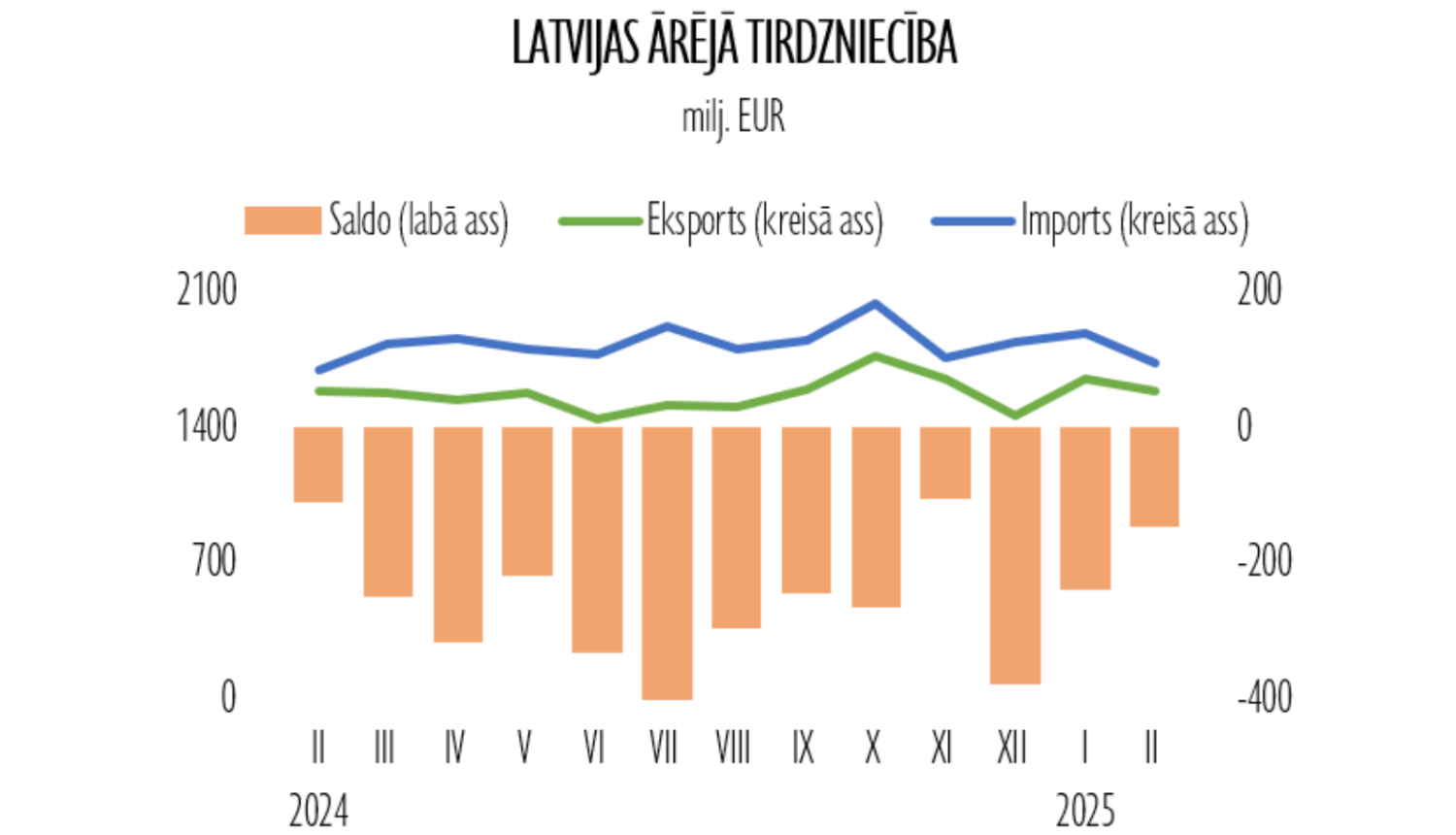In the coming months, Latvia's export dynamics will be volatile, continuing to be limited by geopolitical uncertainty, as well as the trade tariffs imposed by the United States starting in April. In this situation, it is crucial to continue seeking new supply opportunities and diversify markets for goods.
According to data from the Central Statistical Bureau, in February 2025, the value of goods exports at current prices increased by 0.1% year-on-year. Meanwhile, the value of imports was 2.2% higher than a year ago. The trade balance in February was -4.4%.
In February, the export value of mineral products increased significantly year-on-year. The exports of dairy products, cereals, oilseeds, and plastics and their products grew moderately. On the other hand, the export value of pharmaceutical products and wood and its products decreased.
Year-on-year, exports to Latvia's main market, the EU countries, increased by 3%. Exports grew more rapidly to Lithuania (mineral products, vehicles), Finland (mineral products), Belgium (oilseeds), Estonia (dairy products, wood), and France (cereals). However, exports to the Netherlands (mixed chemical products, cereals) decreased.
Exports to CIS countries continued to decrease sharply by 22.4%. This was largely due to a significant reduction in exports to Russia (pharmaceutical products, beverages) and a slightly smaller decline in exports to Belarus (optical devices, worn clothing). A large portion of the total exports to Russia still consists of beverages, along with clothing, footwear, perfumes, and other goods not affected by sanctions.
Exports to other countries grew slightly by 0.6% year-on-year in February. Exports to Morocco, Senegal, and Côte d'Ivoire (all three – cereals), Nigeria (mineral products), and Norway (plastic products) saw a significant increase. However, exports to the United States (wood, machinery), Turkey (iron and steel), and Ukraine (unspecified goods, pharmaceutical products) decreased.
In February, the increase in imports was significantly influenced by the rise in the import value of mineral products and electrical devices and equipment. Meanwhile, imports of land transport vehicles, animal feed, cereals, and pharmaceutical products decreased.
Overall, in the first two months of 2025, the value of goods exports at current prices was 1% lower than a year ago, while the value of goods imports during this period was 9.3% higher than a year ago.



